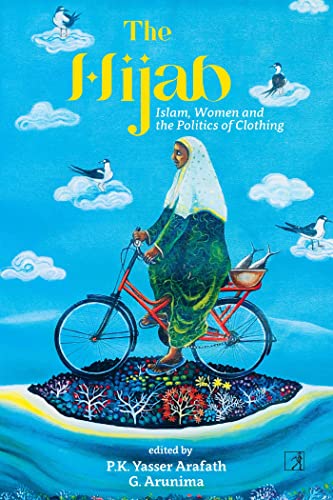
By Mohd Naushad Khan
Nov. 8, 2023
The book, The Hijab: Islam, Women and the Politics of Clothing, by P.K Yasser Arafath and G. Arunima has been shortlisted for the 2023 Atta Galatta-Bangalore Literature Festival Book Prize (best cover design).
The author has thanked the amazing artist Sreeja Pallam for painting and congratulated Mridhu Agarwal on being selected as the Cover Designer. Hijab is also one of the year’s best-selling books.
 Arafath is a Fulbright-Nehru Research Fellow 2023-2024 in the Department of South Asian Studies at the University of Pennsylvania.
Arafath is a Fulbright-Nehru Research Fellow 2023-2024 in the Department of South Asian Studies at the University of Pennsylvania.
Every year, Atta Galatta has the immense pleasure of being able to felicitate the best and brightest of the Indian writers’ community. In association with the Bangalore Literature Festival, a platform for voices from all over India and the globe, we have been striving to commemorate literary achievements with the Atta Galatta-Bangalore Literature Festival Book Prize.
Instituted in 2015, the annual award is presented under nine categories of Fiction (English), Non-Fiction (English), Popular Choice, Best Cover Design and expanded categories for Children’s Writing in 2022, Best Children’s Picture Book Story, Best Children’s Picture Book Illustrations, Best Children’s Book Fiction and Best Children’s Book Non-Fiction.
An annual award is presented for Literary Achievement in Kannada to an author, celebrating their body of work and contribution to the language.
The collection of essays in this book is primarily from India but also with a couple from Bangladesh and Iran, complicates the relationship between Muslim women and the hijab. Moving away from predictable interpretations that see the hijab merely as an instrument of Muslim women’s oppression, the essays here, from a variety of perspectives including historical, ethnographic, and political, demonstrate that not only have Muslim women covered/ or uncovered their heads for different reasons, but the head cloth itself has had different forms depending on the region or period of history.
The essays in the book track the reasons why clothing, especially women’s attire, is very often a site of contestation and provide ways to hear and understand the ways in which Muslim girls or women make their own sartorial choices. They also offer ways of interpreting the stakes in banning the hijab in different parts of the world, and the implications of the ban on Muslim women, the wider community and the very idea of citizenship itself.




